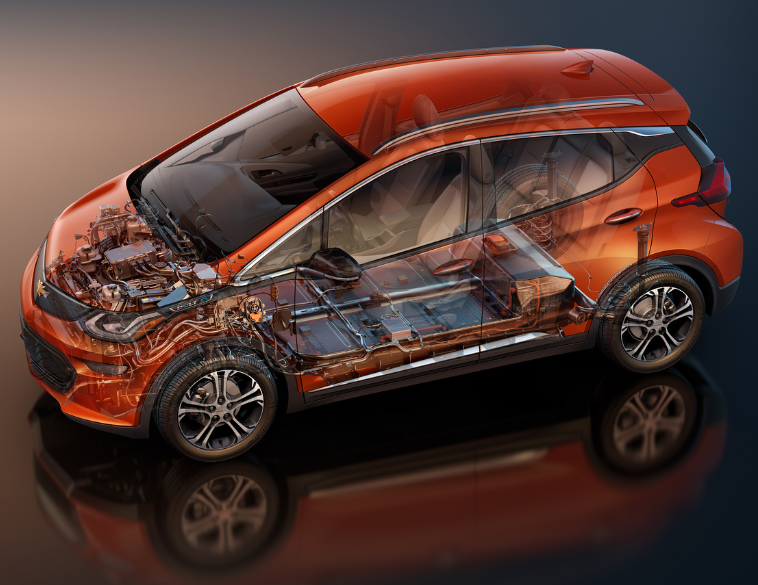A different type of vehicle requires a different approach.
Governments around the world are pushing the automotive industry to sell more EVs, with several mandates currently in place for achieving 100% zero-emissions vehicle production by 2035 or 2040. Yet many questions remain. Not only in terms of how enough natural resources will be available to manufacture all these EVs, but also if there will be an adequate charging infrastructure and the electrical grid to support them. An additional consideration for both OEMs and dealers—is how profitable will it be to sell and service them.
At present, there are many unknowns, but looking at the experience OEMs and their retail networks have had over the last decade can provide insight into what the future may look like for dealers and their customers.
Personal touch
“Dealers have a critical role to help customers get all the right information, teach them all the new features and be there to help customers adjust,” explains Hayato Mori, Assistant Vice President, Business Development and Customer Engagement, Honda Canada. “That personal touch will be more important than ever for customers new to EVs. It’s about being a partner who provides guidance and shares knowledge to get the most out of the EV and the vehicle’s many new features rather than the traditional sales relationship and relying on the owner’s manual.”
At Nissan Canada, Andrew Harkness, Director, Dealer Network Development & Customer Quality explains that going forward, it’s important for the OEM and its dealer network to capture every aspect within the ecosystem of vehicle ownership. “As far as the sale of the vehicle goes, we want to ensure our retailers are able to sell vehicles profitably,” he explains.
The importance of partnerships
Nissan has spent more than half a century building a robust dealer network across Canada which currently numbers 209 Nissan locations and 38 Infiniti stores. It’s also been a pioneer in selling EVs, having been retailing them for more than 10 years. “As we increase transparency within the transaction process and via incoming e-commerce platforms, all of our business is intended to be funnelled through our retail network. Our dealers are our partners,” Harkness explains.
That being said, there are several aspects of retailing that need to be considered in order for dealers to sell and service EVs profitably. Besides transparency and the ability to generate profit on the sale of the vehicle itself, there are also F&I products, such as insurance, paint protection, warranty and maintenance plans.
There’s also a need to ensure dealers have a robust charging infrastructure and also parts and tire sales to support their EV customers long-term. “At Nissan, we have partnered with FLO [charging] so that our dealers can provide their customers with charging solutions,” says Harkness. This includes options and packages that enable clients to purchase charging infrastructure and have it installed at home.
On the maintenance side, while EVs don’t have engines and in most cases transmissions, service is still required, including cabin air filters, wiper blades, battery system servicing, as well as tires, suspension and brake system service and maintenance.
Maintenance still matters
Neglecting maintenance, or not explaining it to customers can have significant impacts on EV operation and ownership experiences, as much as it does with a traditional car or truck. Cara Clairman, President & CEO of Plug ‘n Drive, a non-profit entity that provides education and resources for consumers looking to purchase EVs, notes that as an early adopter, she’s experienced these kinds of situations firsthand.
A good example of this concerns a rapid reduction in vehicle range and utility due to seizing brake components. Because EVs use regenerative braking and the braking system doesn’t play as big a role in daily use as it does on an ICE vehicle, callipers and pistons can seize, as can parking brake mechanisms, causing the wheels to drag, increasing rolling resistance and compromising range.
Additionally, due to heavier curb weights, different centre of gravity and high torque at zero rpm from electric motors, EVs also tend to go through tires much faster than a regular vehicle. That’s why dealers need to ensure not only that their customers are aware of maintenance requirements, but also that tires designed specifically for EVs warrant consideration too.
Heavier weight also puts more stress on suspension components including control arms, bushings, springs and dampers, which means more revenue opportunity in Fixed Ops for dealers, but they need to ensure it doesn’t come at the expense of customer satisfaction or long-term retention due to a lack of focus in educating customers on service needs and intervals.
At OpenRoad Auto Group, Harj Gill, Vice President, Regional Operations, says an important consideration for dealers on the Fixed Ops side, is understanding that maintenance intervals tend to be longer with EVs than traditional vehicles.
There also needs to be more of an emphasis on ensuring technicians are thoroughly trained to handle complex diagnostic tasks and over-the-air updates as these will be the cornerstone of profitable service departments.
Changes to dealerships
Additionally, there is a very real chance that the footprint and configuration of the dealership will change. “We are going to continue to become more engaged with our customers,” Gill explains. “The ownership experience needs to become more personalized, and we have to become more of a connection-based business rather than a commodity based-one.”
This means less physical one-on-one interaction with customers, both in the showroom and the service department, which will likely mean dealers will need to seek different ways to boost margins such as reducing overhead expenses, resulting in fewer on-site staff along with smaller lots and facilities that are designed to maximize efficiency in both sales and service.
At Nissan Canada, Andrew Harkness says that with over a decade of experience in selling and servicing EVs, several things are clear. Firstly, dealers need to understand that on the Fixed Ops side, service revenues will be lighter than traditional vehicles, at least over the first 4-5 years of ownership.
By comparison, making significant investments in tire sales and replacement will be key to ensuring not only profitability but long-term retention. “This really is going to be a retention hook,” he says, “making sure the customer comes back to you when they need replacements.”
He also stresses that dealers can really add value to their EV customers and boost revenue, by offering personalization and accessorizing options when they purchase or lease the car (even providing those upgrades during service visits), as well as ensuring the service experience itself is transparent; easy and convenient.
At Honda Canada, Hayato Mori says that in both service and sales, dealers will continue to play a critical role when it comes to EVs. “Many customers still want that human touch in the final stages of a large transaction [such as a vehicle]. We believe our dealers are vital to this and we continue to plan to ensure dealers are an integral part of the process.”



